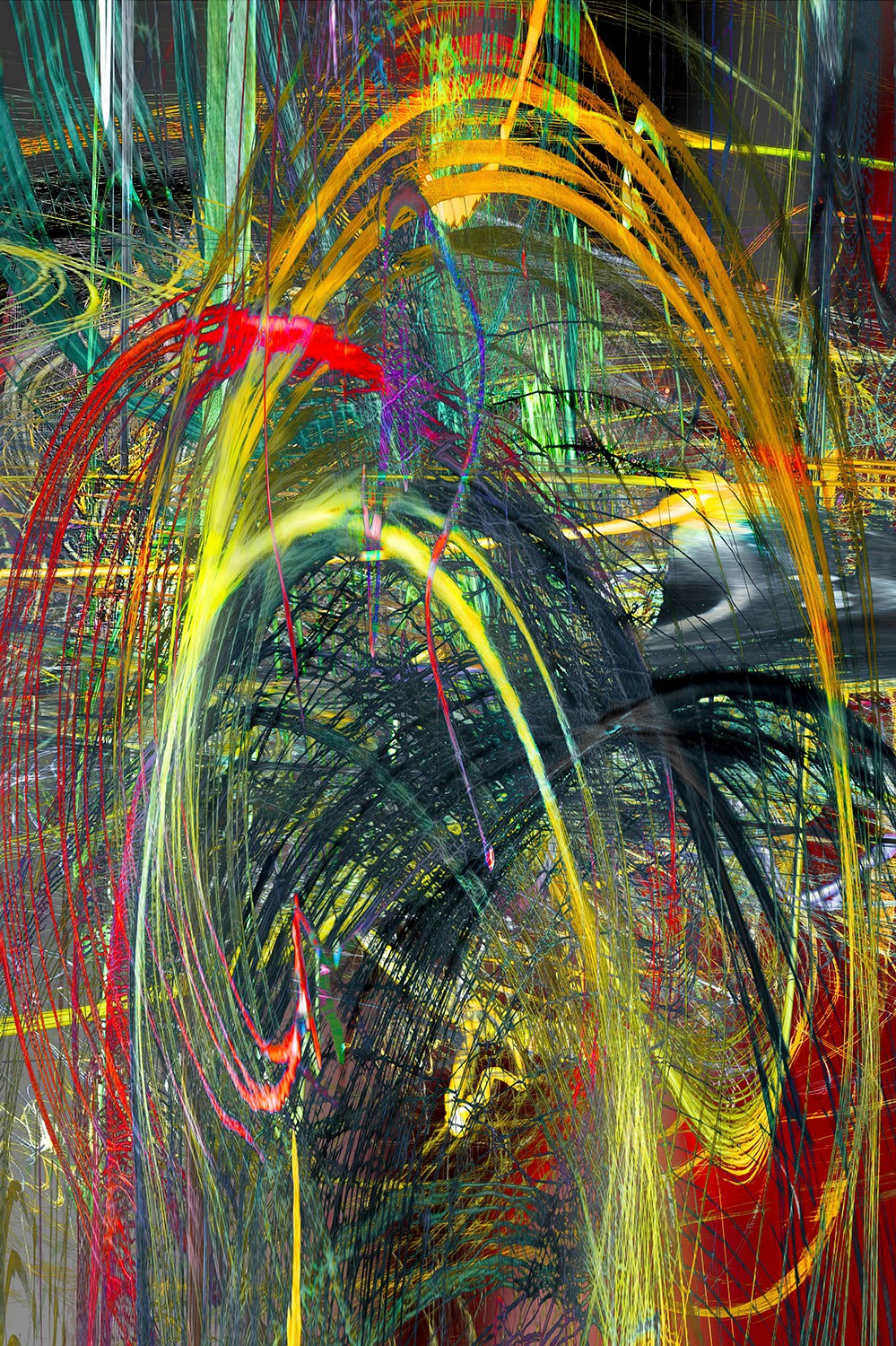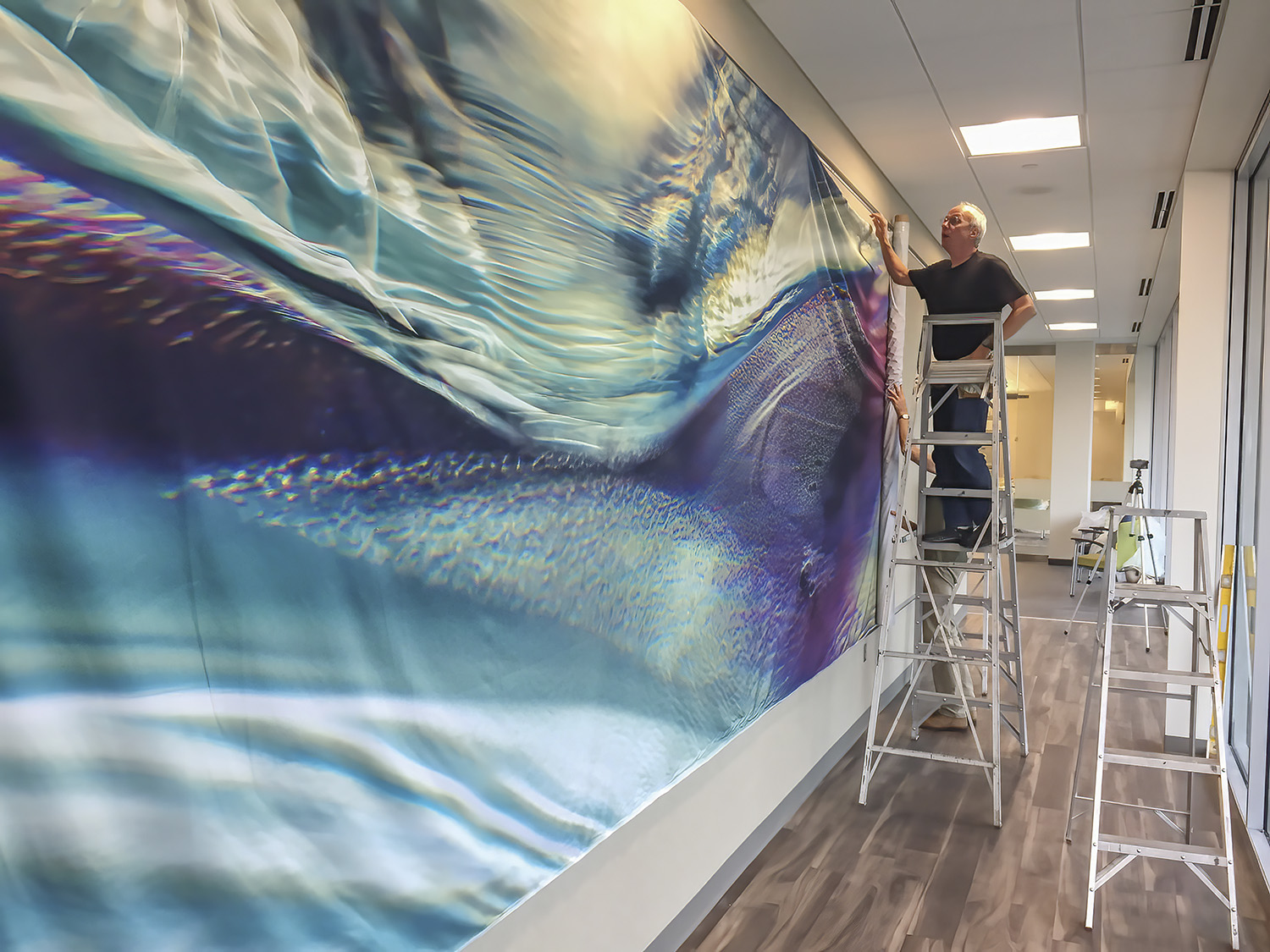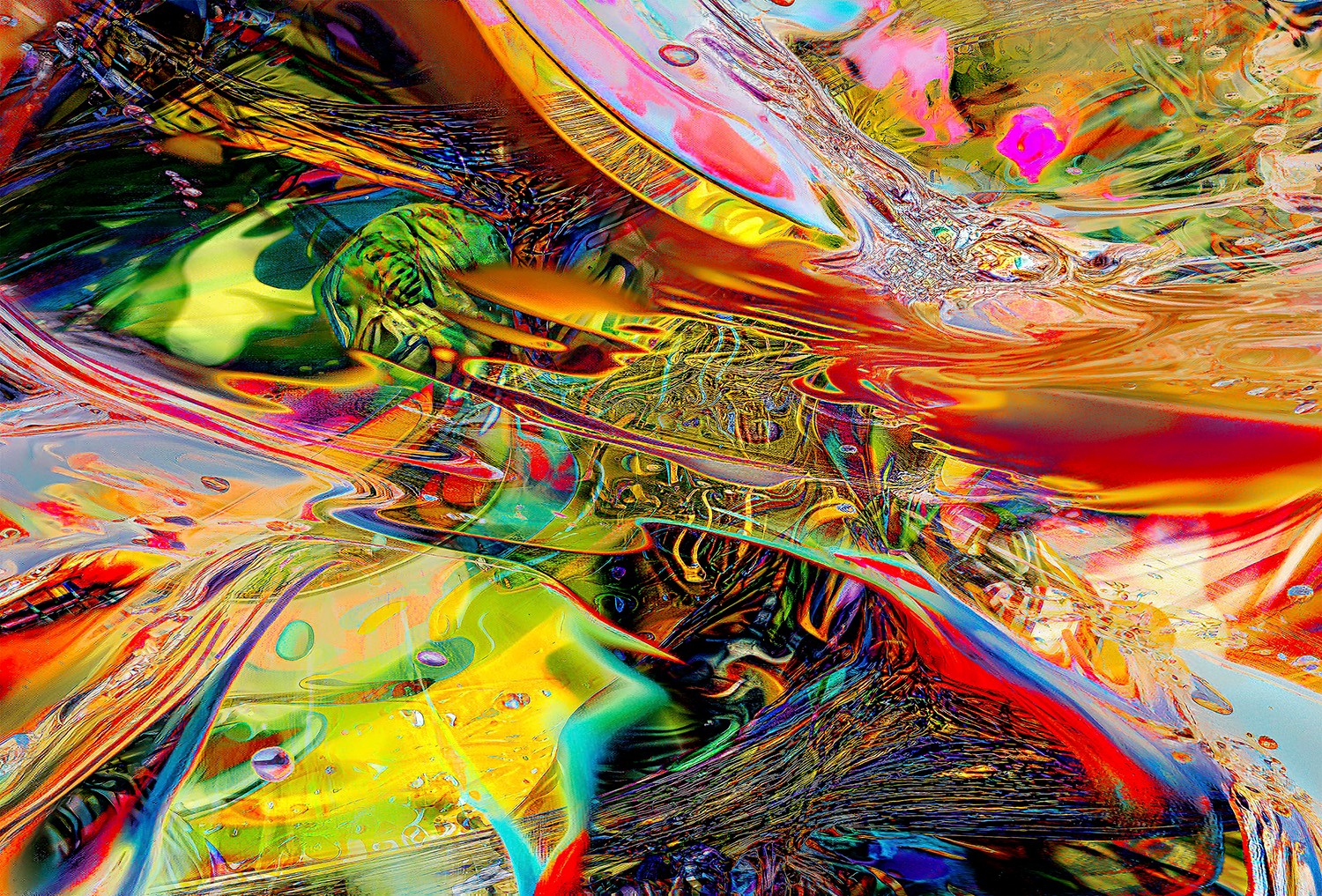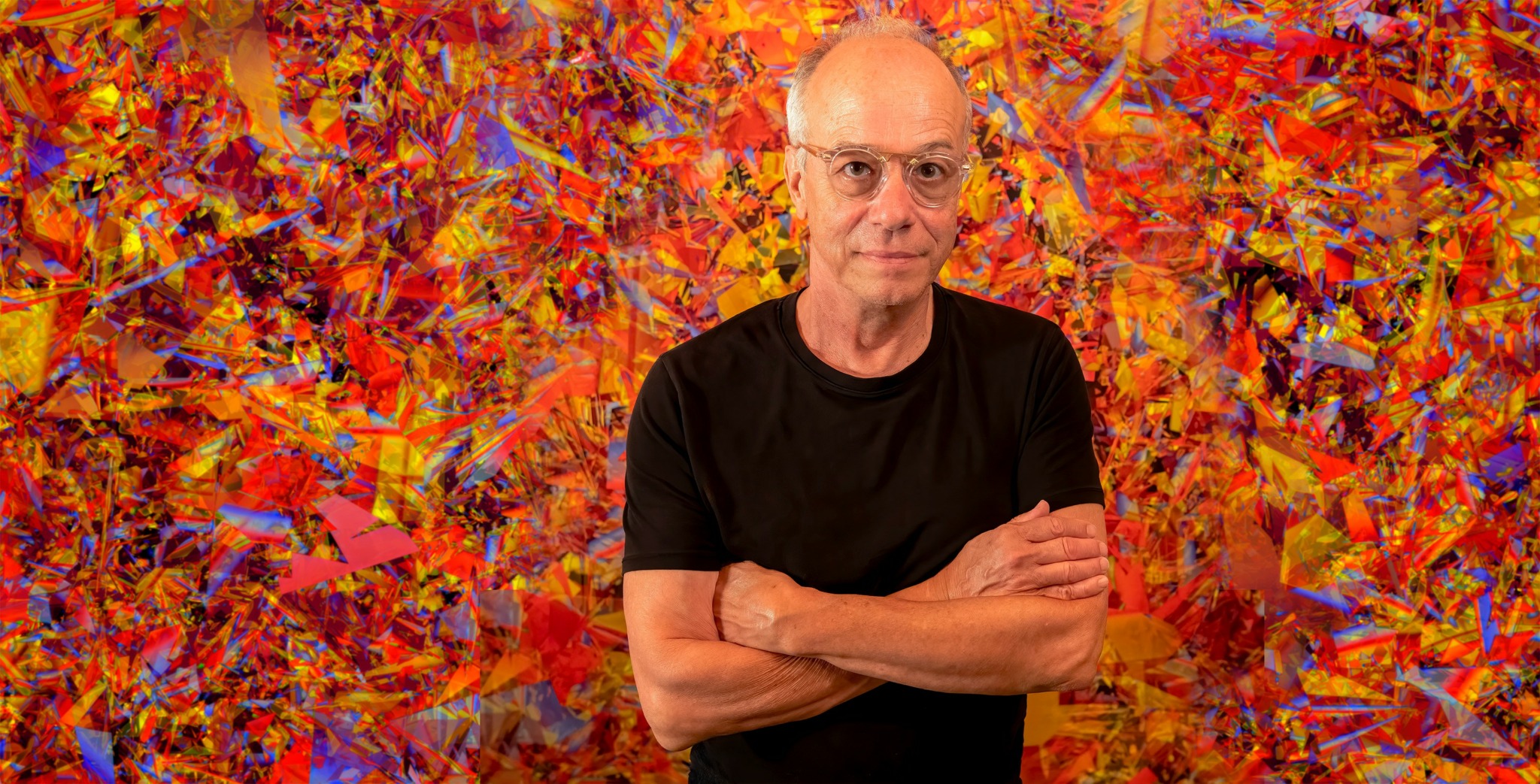Alright – so today we’ve got the honor of introducing you to Tim Forcade. We think you’ll enjoy our conversation, we’ve shared it below.
Tim, looking forward to hearing all of your stories today. Have you been able to earn a full-time living from your creative work? If so, can you walk us through your journey and how you made it happen? Was it like that from day one? If not, what were some of the major steps and milestones and do you think you could have sped up the process somehow knowing what you know now?
I have had all manner of employment, union laborer, house painter, offset lithographic platemaker, lumberyard worker, dental hygienist, commercial studio photographer, journalist, software developer, and more – all in support of my artwork.
I began drawing and painting compulsively as a child, at home, throughout public school, and later at the University of Kan¬sas while studying drawing and post-modernist painting (BFA 1970). Given my work with traditional media, and years in the studio educated by exceptional teachers, I rejected their definition of abstract art. I worked obsessively to discover alternatives. I became fascinated with systems aesthetics, the use of rules-based systems, and procedurally devised geometric constructions. Traditional media increasingly fell short of what I aspired to do, though I was not at all clear about what that aspiration might be. I did know quite clearly that subjects like life drawing or oil painting, the foundations of art school curriculum, had become distracting and impertinent.
Then in the spring of 1968 came an improbable opening. Midway through my university art study I was offered a summer job designing and presenting light shows for a traveling rock band. I used an array of projectors, hand painted slides, liquid effects and strobe lights to create abstract patterns that rhythmically pulsed over the musicians. The purity of light and the connection of art and technology had taken hold. I wanted to work with light expressively just as I had with paint.
After that experience and back at university I eschewed paint and charcoal. I began work with strobe lights, motorized collage, and abstract photography. I built “light machines”, devices that used electronic circuitry to create manually controlled color fields on light box screens. I submitted my work for critique at university and though I was encouraged, I received little pertinent teaching. Upon graduation I was informally accepted to graduate school at two ivy league shcools. However, I wanted a degree in art and technology, and no such degree existed. I declined both offers and instead became a dedicated autodidact reading, studying, and experimenting with whatever technology I could get my hands on.
In 1973 I landed a job and an introduction to the company president who took an interest in my obsession with light. He supported my research and expenses associated with learning electronics and building “Light Machine III”. It converted sound into moving color compositions by interpreting sound. The device occupied a 72” x 19” rack jammed with handmade electronics requiring four years to design and build working day and night. It divided the full extent of audible sound into distinct frequency ranges and routed each to strings of colored lights. It visualized music with uncanny fidelity even distinguishing visual differences between musical instruments. From there I created light synths I used to convert sound into intricate moving compositions. Despite various exhibitions and symposia my work failed to support me.
In 1975 I took a job as a studio photographer shooting all manner of commercial subjects using the limiting case of photographic technology. I learned the workings of view cameras, advanced lighting, photo-composition, and darkroom work. By 1977 I started my own business doing photography and design work for a commercial clientele. In this capacity I can safely say I have photographed everything – fashion, food, industrial, aerials, architectural, underwater and special effects, to name a few. I’ve been called upon to make imagery as small as a quarter inch and as large as 250 feet wide using all manner of film and digital formats. This financed my art while the less ridged structure of being my own boss provided me the time to continue my artistic research.
In 1986 I acquired a computer and subsequently cofounded a second company that provided me access to early CAD software and training. I began to incorporate computer graphics into my design practice with an eye to using it in my fine art practice. By the late 80’s and early 90’s 3D modeling and animation software emerged, and I wanted access. Such programs and the computers capable of working with them were way beyond my finances. I obtained access by working as a journalist and writing regular articles for magazines including Computer Graphics World. As my articles gained an international audience I was granted more access to training, given software and computers. For 15 years I wrote tutorial articles and books on computer techniques, attended computer conferences, and diverse symposia. In the process I learned advanced 3D modeling and animation techniques along with the complex 2D photocomposition methods I have subsequently used to create my artwork.
Since then, I have built upon ongoing exposure to cutting edge tech while always referring to my drawing and painting experience. I’ve found that demanding commercial clients and insane deadlines beneficial to my artwork. There has always been a link informing both practices. Founding my own business as enabled me to leverage my artwork and earn a full time living. Make no mistake it has always been a rollercoaster. One moment six weeks to the street and the next making a comfortable living.
To summarize, my career has been a mix of formal, on-the-job, and self-sustained research. As an early adopter of computer technology in the 1980’s, I participated in its emergence and evolution as an artist, author, and development team member. Along with my experience with CGI came decades of “day job” work as a designer and studio photographer for a national clientele. My commercial work informed my artwork and vice versa. It enabled me to develop a working knowledge of new media that continues to enable me to this day. My mix of experience as a painter, electronic circuit designer, digital artist, software developer, and professional photographer has provided me a unique perspective on art and art practice.

Tim, before we move on to more of these sorts of questions, can you take some time to bring our readers up to speed on you and what you do?
I was hatched an artist. It’s always been the basis of my professional life. I am also an insatiable self-learner finding most all topics worthy of investigation. Early in my career I was attracted to photography and while studying painting I incorporated it into my artistic practice spending hours in the darkroom or in my studio shooting a mix of various subjects and live models. I loved the process, the gear and the immediacy of the medium. I began to freelance, shooting informal portraits, weddings and the commercial products.
One day desperately needing a job, I walked into the largest commercial studio in Kansas City, Missouri and addressing the owner said, “I want to work for you. Hire me for two weeks. If I don’t prove myself, fire me and don’t pay me.” I worked there for a year or so and in the process received spectacular education and training I could access nowhere else. I learned the limiting case techniques in studio photography, film technology, and lighting as I worked with national level companies and all types of cameras and lenses.
I left that studio to start my own in 1977. Since then I gone from doing studio and location photography to expanding into photo illustration, 3D visualization, video production, and animation. Simply put I solve graphics problems and to supply graphic content to order. When asked, “Tim, what services does your company provide?” my answer has always been “What do you want?”
This has landed me in project-after-project for national and international clients, demanding work at times in across many time zones making sleep a remote possibility. The demands of my artwork combined with my commercial production was all consuming. Working intensively with analog electronics and music synthesis to create artworks while continuously meeting insane client deadlines, required something of an oddly monastic existence.
My work has focused on creating imagery with whatever I can get my hands on. My ambition has been to fully explore and push familiar media into unfamiliar territory. My artistic story revolves around three core passions – light, technology and abstraction. Today I remain as immersed as ever. The studio is irresistible. I am absorbed in a constant sequence of breakthroughs leading me deeper into light’s purity, technology’s limitless potential, and abstractions mystery.

Is there a particular goal or mission driving your creative journey?
My mission is to dive, drill, or sink as deeply as possible into what’s right in front of me. When I’m creating artwork, I find it essential to become the work itself. In other words, become its advocate completely engaging in the dialog that is always there. At times work seems to push back or resist my intentions but this pushes me to look more deeply always leading to discovery.
Working with commercial clients is very similar. You must listen closely and look deeply to discover what they are asking of you. Of course, they hire you for your expertise, but you must not let that notion govern the relationship/project. The work isn’t about you, or your bleeding portfolio or the next gig. It’s this project alone and your relentless commitment to perfection.

Can you tell us about a time you’ve had to pivot?
You must always be prepared to change direction. Remember, we are all limitless potential. In Zen practice there is a teaching, “What is this?” “Don’t know.” This points to the idea of not labeling yourself, thus preventing you from imposing stifling limits on your art. This method leaves you wide open to becoming absolutely anything at all.
For instance, in fine art practice you may find yourself wedged firmly in an aesthetic corner, blocked, and feeling helpless. In commercial art practice you may suddenly lose your principal client leaving you without income. In those instances, I obsessively retool, move beyond the studio, study and apply absolutely anything else. I place myself in unfamiliar places and situations. This has resulted in travel, pursuits including sky diving, and attending special interest conferences – anything to promote and reinvigorate my work. Embrace each pivot and enjoy its uncertainty.
Contact Info:
- Website: https://www.forcadeimages.com
- Instagram: @tforcade
- Facebook: https://www.facebook.com/TimForcadeImages
- Linkedin: https://www.linkedin.com/in/tim-forcade-17802737
- Youtube: https://www.youtube.com/@timforcade6716/videos
- Other: https://www.blurb.com/books/11937761-discovered-in-light




Image Credits
All images copyright Tim Forcade, Forcade Images, Forcade Associates


